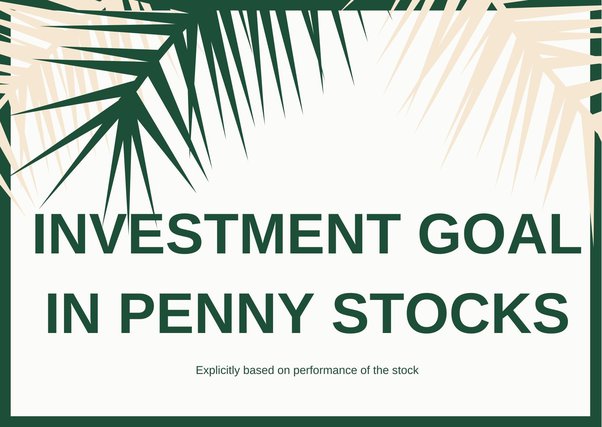
Although you may be familiar with Value investing, Dividend investing and Growth investing, do you really know how to put them into practice in your portfolio? Stock investing is not an easy task. It's important to determine which stocks are the best for you. Before you get started, consider some basic stock market strategies. They will help you understand the market better and make better investment decisions. We'll take a closer look in this article at each.
Dividend investing
Dividend investing, which is one of the most common investment strategies, is one. This strategy involves investing in shares of companies that have a history distributing dividends to shareholders. These are usually blue-chip businesses with steady profits and low growth rates. Exponential growth companies do not typically pay dividends. Instead, they will invest their profits in acquisitions or innovation. Dividend investing is not for everyone. There are also many risks.

In addition to the risks involved, dividends are not guaranteed. If the company is unable or unwilling to fulfill contractual obligations, a company can cut a dividend at will. Many investors still rely on dividends as a source for income. By carefully analyzing the company's finances, a retiree can set up a dividend schedule. While stocks can suffer from a slowdown or a decline in dividends, these investments are often less volatile than other stock markets.
Value investing
Value investors look for stocks that are undervalued and hold them for a long time. They seek to make a profit by identifying undervalued stocks and then hold them for a long time. They must be patient, diligent, and energetic to do this kind of investing. Here are some of the key skills required for value investing. This strategy is worth learning about before you start.
First, value investing requires a long-term mindset. John Maynard Keynes once said that the market is irrational for as long as a solvent investor is willing to hold on. This approach can yield substantial gains but it is not guaranteed to be a quick win. Despite what many investors say, Mr. Market may not always recognize that a stock is overvalued. This doesn't mean you have to abandon value investing.
Growth investing
Growth stocks are not for everyone but can be a great way of diversifying your portfolio. You can start by investing in ten percent of your portfolio in growth stocks, and increase it over time if you have the patience. You should consider the risk factor before investing in growth stocks, since they tend to be more aggressive than defensive stocks. Alternatively, you can use software that will help you narrow down your focus to a few specific growth stocks.

If you are looking for growth investing stocks, it is important to look for companies that have high earnings growth. Companies with high profit margins are best for growth investing. A company that has a high margin indicates it is efficient at generating revenues. Investors tend to look for high pretax profit margins because these companies are more likely have ongoing growth. You must consider the history of management to assess whether it is run efficiently and is managed by experienced executives who are capable of making good decisions.
FAQ
What should I invest in to make money grow?
It's important to know exactly what you intend to do. It is impossible to expect to make any money if you don't know your purpose.
Also, you need to make sure that income comes from multiple sources. In this way, if one source fails to produce income, the other can.
Money doesn't just magically appear in your life. It takes hard work and planning. You will reap the rewards if you plan ahead and invest the time now.
Do I need any finance knowledge before I can start investing?
No, you don’t have to be an expert in order to make informed decisions about your finances.
All you need is common sense.
Here are some simple tips to avoid costly mistakes in investing your hard earned cash.
First, limit how much you borrow.
Don't go into debt just to make more money.
Make sure you understand the risks associated to certain investments.
These include inflation and taxes.
Finally, never let emotions cloud your judgment.
It's not gambling to invest. You need discipline and skill to be successful at investing.
These guidelines will guide you.
Should I invest in real estate?
Real Estate Investments can help you generate passive income. They do require significant upfront capital.
If you are looking for fast returns, then Real Estate may not be the best option for you.
Instead, consider putting your money into dividend-paying stocks. These stocks pay monthly dividends which you can reinvested to increase earnings.
Statistics
- If your stock drops 10% below its purchase price, you have the opportunity to sell that stock to someone else and still retain 90% of your risk capital. (investopedia.com)
- Some traders typically risk 2-5% of their capital based on any particular trade. (investopedia.com)
- According to the Federal Reserve of St. Louis, only about half of millennials (those born from 1981-1996) are invested in the stock market. (schwab.com)
- 0.25% management fee $0 $500 Free career counseling plus loan discounts with a qualifying deposit Up to 1 year of free management with a qualifying deposit Get a $50 customer bonus when you fund your first taxable Investment Account (nerdwallet.com)
External Links
How To
How to Invest into Bonds
Investing in bonds is one of the most popular ways to save money and build wealth. When deciding whether to invest in bonds, there are many things you need to consider.
If you want financial security in retirement, it is a good idea to invest in bonds. You might also consider investing in bonds to get higher rates of return than stocks. Bonds are a better option than savings or CDs for earning interest at a fixed rate.
You might consider purchasing bonds with longer maturities (the time between bond maturity) if you have enough cash. They not only offer lower monthly payment but also give investors the opportunity to earn higher interest overall.
Bonds come in three types: Treasury bills, corporate, and municipal bonds. The U.S. government issues short-term instruments called Treasuries Bills. They pay very low-interest rates and mature quickly, usually less than a year after the issue. Companies like Exxon Mobil Corporation and General Motors are more likely to issue corporate bonds. These securities generally yield higher returns than Treasury bills. Municipal bonds are issued by states, cities, counties, school districts, water authorities, etc., and they generally carry slightly higher yields than corporate bonds.
Consider looking for bonds with credit ratings. These ratings indicate the probability of a bond default. The bonds with higher ratings are safer investments than the ones with lower ratings. It is a good idea to diversify your portfolio across multiple asset classes to avoid losing cash during market fluctuations. This will protect you from losing your investment.